In today's fast-paced digital world, having a robust IT disaster recovery plan is more crucial than ever. Whether it's a data breach, natural disaster, or unforeseen technical glitch, being prepared can save your organization from significant setbacks. In this article, we'll walk you through the essential updates needed to enhance your disaster recovery strategy, ensuring you can bounce back swiftly and effectively. Join us as we explore best practices and actionable tips to secure your IT infrastructure'let's dive in!
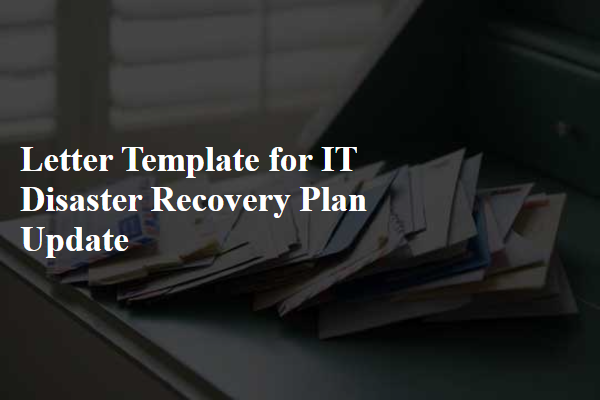
Clear Objectives
An IT disaster recovery plan update establishes clear objectives for maintaining business continuity during unforeseen events. The primary objective includes minimizing downtime, targeting restoration of essential systems, applications, and data within a specific timeframe, often referred to as Recovery Time Objective (RTO), typically set between 24 to 72 hours for critical operations. Another key goal focuses on data integrity, ensuring that recovery processes adhere to data protection standards, often guided by regulations like GDPR, particularly for organizations operating within the European Union. Comprehensive training for staff on the updated protocols is essential; simulations may be conducted to assess readiness, targeting at least two drills annually. Regular reviews and updates align these objectives with evolving technology trends and business priorities, ensuring resilience in the face of potential disruptions like cyberattacks or natural disasters.
Communication Strategy
An effective communication strategy during IT disaster recovery is crucial for minimizing confusion and maintaining operational continuity. Key stakeholders, such as IT personnel, management, and end-users, need to be informed through multiple channels, including email alerts, SMS notifications, and dedicated incident response hotlines. Regular updates should be scheduled at defined intervals, such as every hour or bi-hourly, to provide real-time information about recovery progress and system status. Critical information, such as incident specifics, estimated resolution times, and alternative operational measures, should be disseminated clearly to ensure understanding. Utilizing a centralized communication platform can help streamline updates and ensure consistent messaging, reducing the risk of misinformation. Preparing FAQs and a dedicated web page with recovery status can also provide self-service support for users seeking information.
Resource Allocation
An effective IT disaster recovery plan update requires careful resource allocation to ensure rapid recovery from unexpected events. Critical components include hardware assets such as servers, which need optimal configurations to maintain operational continuity. Software applications used for data management, including SQL databases, must be regularly updated and backed up, with recovery points ideally no more than 24 hours apart. Human resources, like IT specialists trained in security protocols and recovery procedures, should be clearly defined within the plan, ensuring all personnel understand their roles during emergencies. Additionally, geographic considerations, such as establishing off-site backup locations, play a significant role in minimizing risks associated with natural disasters, like hurricanes or flooding, affecting primary data centers. Properly documenting these allocations will enhance the plan's effectiveness and resilience against various threats, safeguarding organizational data and ensuring speedy restoration.
Risk Assessment
The IT disaster recovery plan update emphasizes the critical importance of conducting a comprehensive risk assessment tailored for organizational resilience in the face of potential disruptions. Essential elements of the risk assessment include identifying vulnerabilities, quantifying potential financial losses (typically between 20 to 30 percent of annual revenue), and evaluating the impact of disruptions on essential systems such as databases, networks, and servers, particularly within the context of localized events, like natural disasters or cyberattacks. Additionally, the assessment must consider recent data breaches--over 40 percent of companies experienced incidents in the past year--highlighting the need for robust preventative measures and recovery strategies. Regular audits of existing infrastructure, evaluation of third-party service providers, and strategic planning (including the development of communication protocols) are essential components that ensure the organization can swiftly adapt to unexpected IT challenges while safeguarding sensitive data and maintaining operational continuity.
Testing and Revision Schedule
The IT disaster recovery plan requires regular updates to ensure its effectiveness against potential threats. Scheduled testing takes place biannually, allowing identification of weaknesses in response strategies, with the next test set for March 2024 at the headquarters data center. Revision sessions occur quarterly, aligning team members from IT and cybersecurity departments to incorporate recent technological advancements and emerging risks, while also analyzing past incidents like the 2023 ransomware attack on local companies. This proactive approach strengthens the plan and prepares the organization against business continuity challenges. Documentation updates will reflect new contact information for key personnel and current vendor agreements, ensuring that response efforts are timely and efficient.

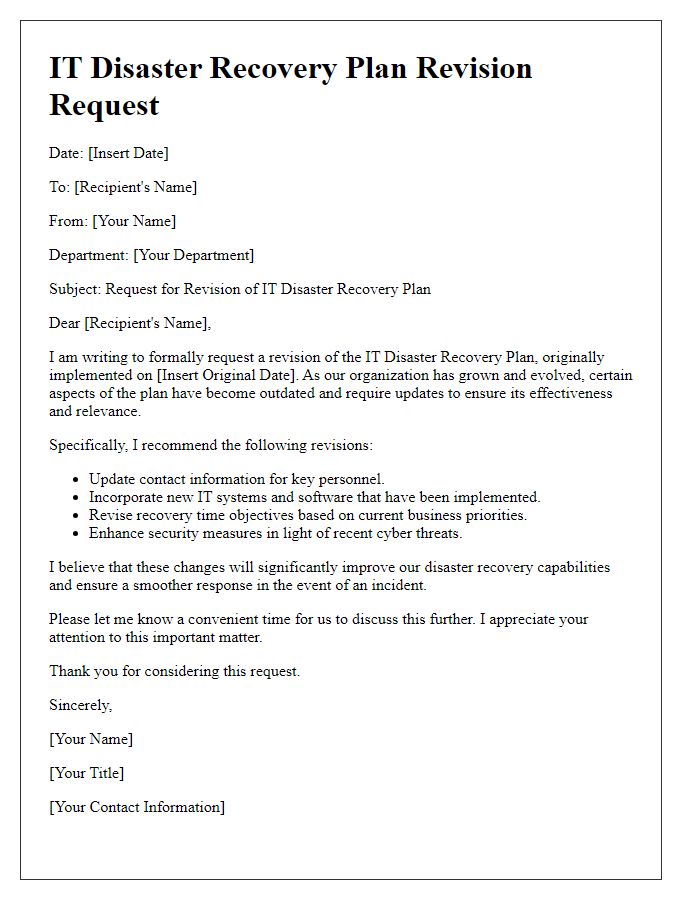
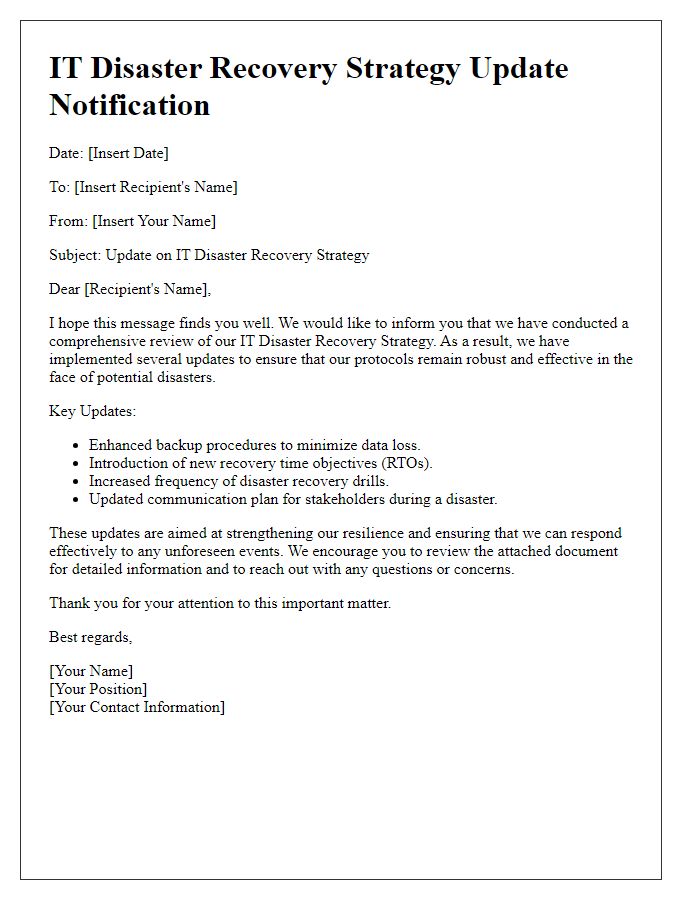
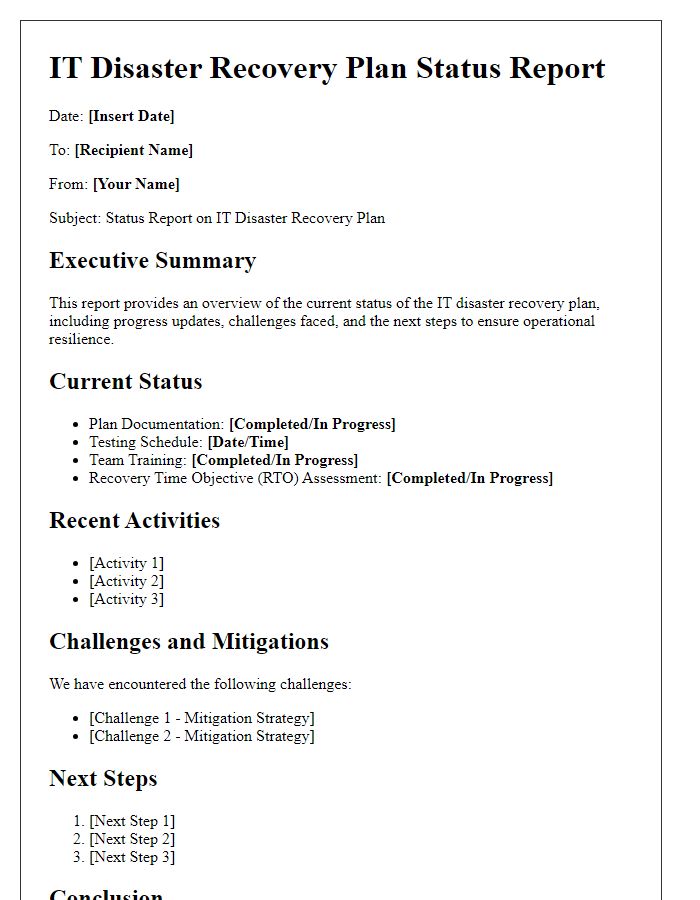
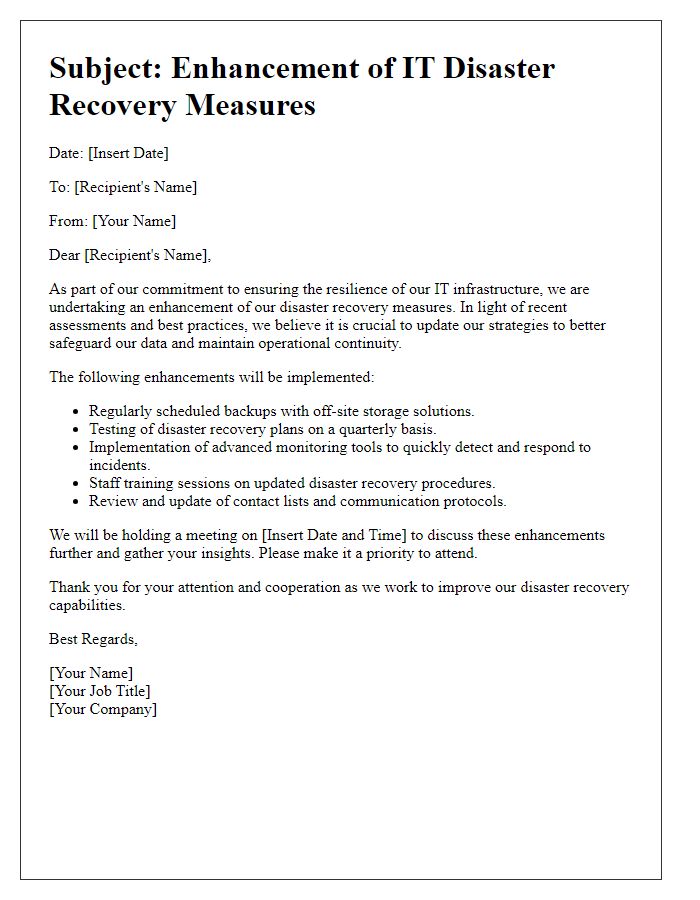
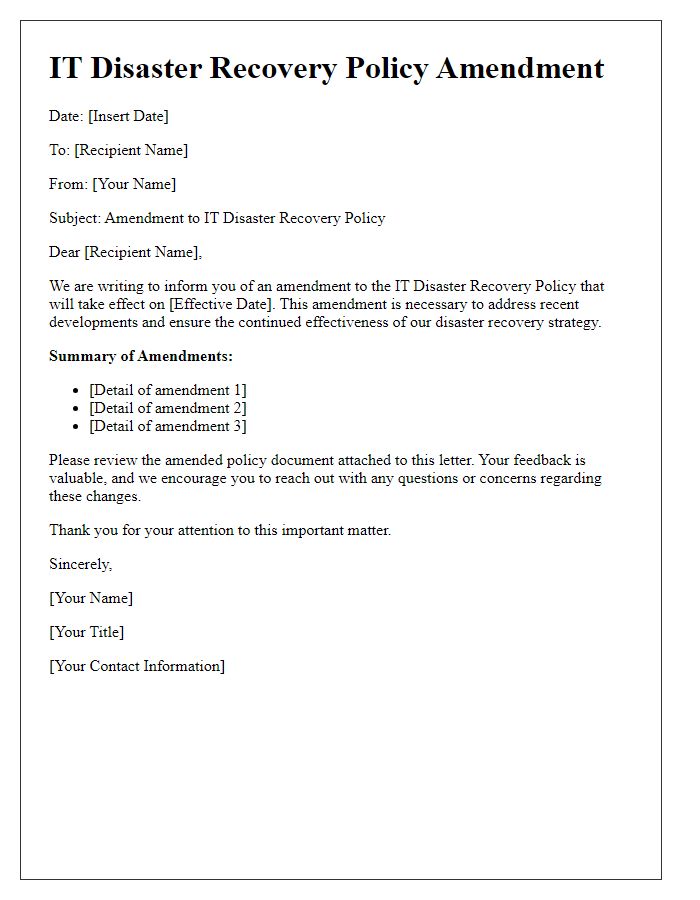
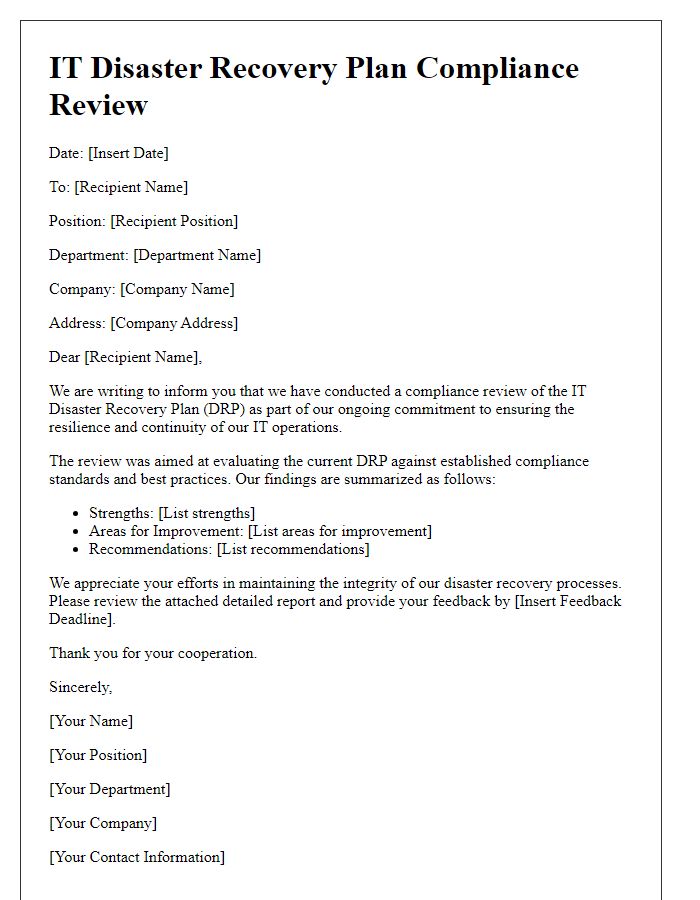
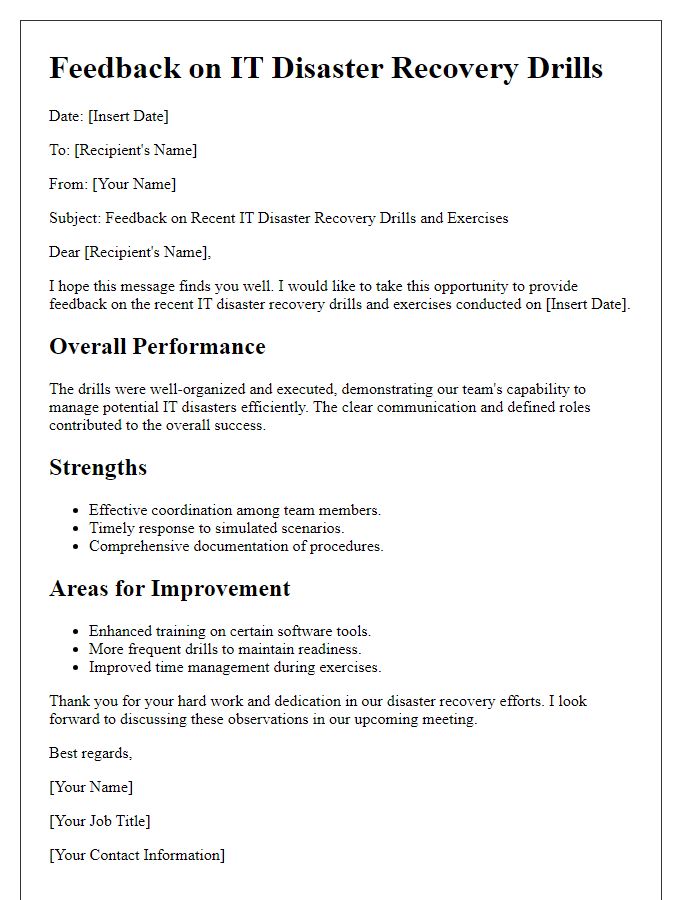
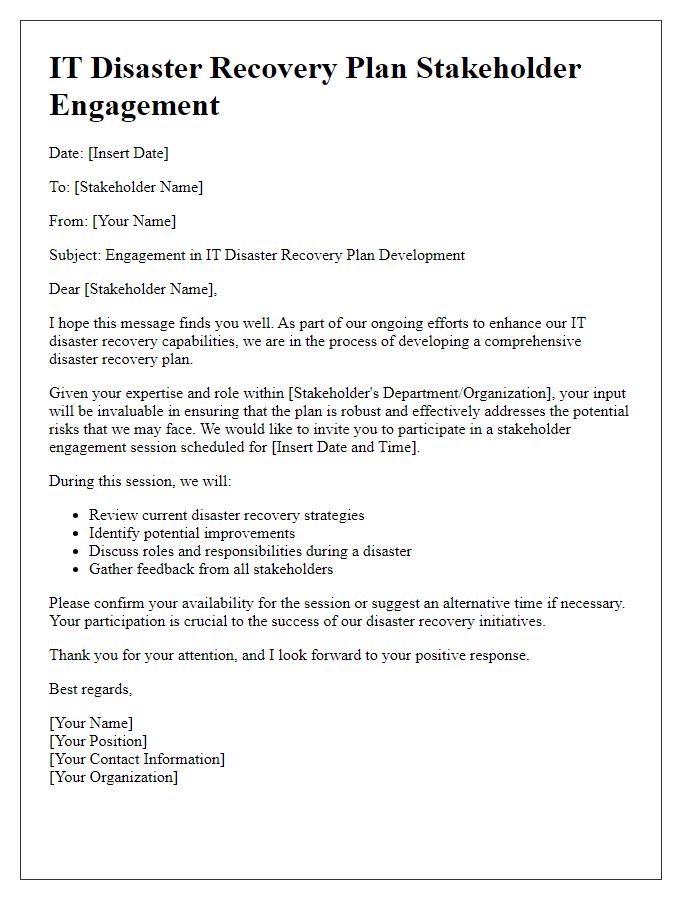
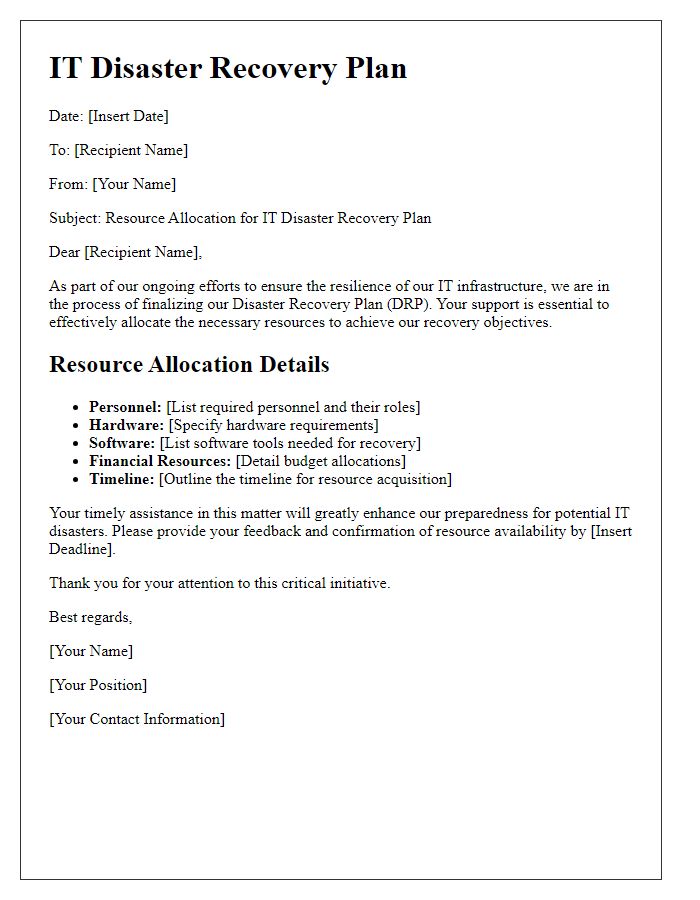
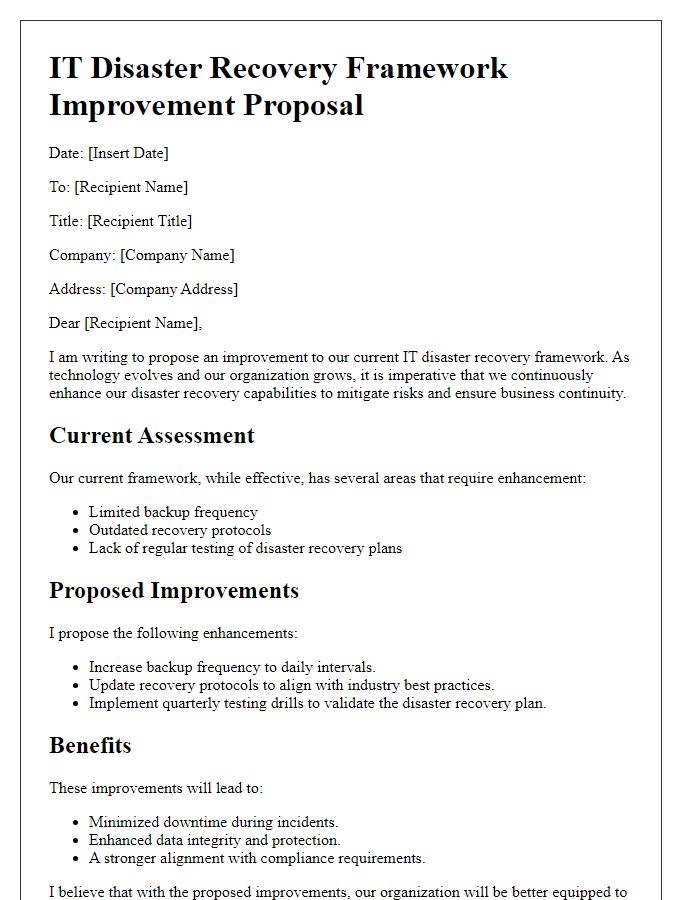


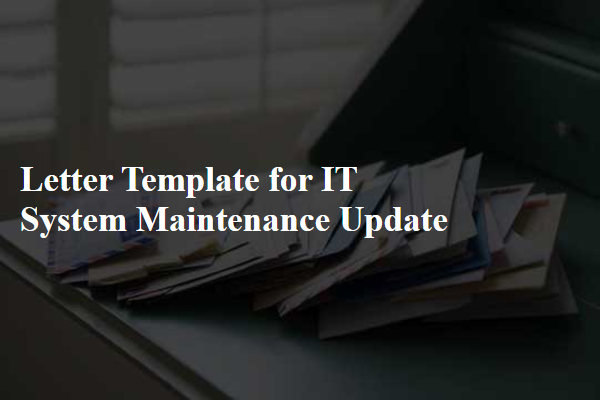


Comments